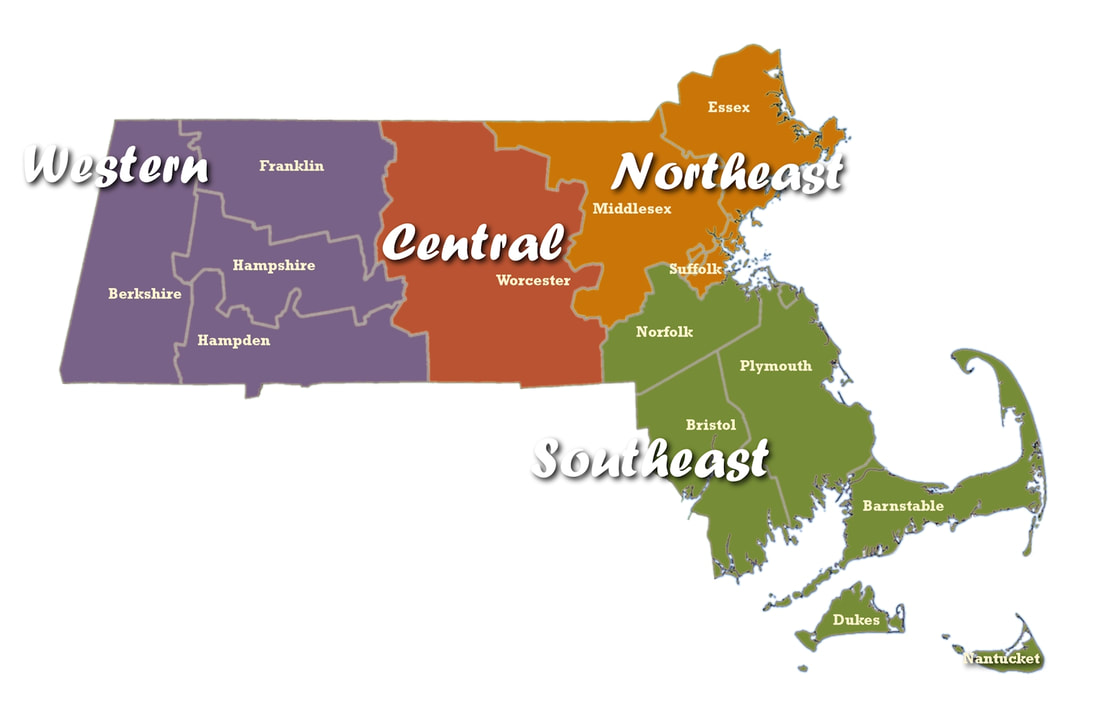Welcome to the native plant finder for pollinator species at risk in New England!

The plant recommendations for bumblebee species are based on over 5 years of species-level field research by the Gegear lab. A species is considered to be at risk if it has shown a significant decline in abundance over the past few decades. It is important to note that pollinator species considered 'rare' or 'specialist' are not necessarily at risk - many rare species are stable and many specialist species have increased in abundance.
The master chart is divided into four categories of plants: pollen sources (bumblebee focus), nectar sources (bumblebee focus), host plants (butterflies) and nectar/pollen sources for other (non bumblebee) bees. Pollen sources are critical because they enable bees to make more bees, nectar sources are critical because they provide fuel for adult bees and butterflies to be active, and host plants are critical because they give caterpillars (larval stage of butterflies) something to eat! Remember, including plants that provide all three functions to as many species as possible throughout the season is critical for developing an effective conservation plan for native pollination systems (the animal AND the plant side of the equation).
Things to consider:
Scroll down for a complete list of butterfly and other (non-bumblebee) bee species at risk present during each part of the season. For butterflies, charts are specific to each region of Massachusetts, with host plant and flight time information also provided for each species. Flight time is the part of the season when the adults are present and looking for nectar sources.
Together, we will keep biodiversity and ecosystem health humming for years to come!
--RJ Gegear
Click HERE to download a PDF of my 2023 list of native plant species preferred by imperiled bee and butterfly species (you can browse the list below). The list is based on approximately 20,000 observations of animal-flower interactions in MA, NH, RI, CT and NY. A list of target butterfly species and corresponding host plants and ranges is also included. Restoring native plants is critical not only for imperiled flower visitors but also for imperiled wildlife that depend on 'pollination products' for survival and reproduction.
The master chart is divided into four categories of plants: pollen sources (bumblebee focus), nectar sources (bumblebee focus), host plants (butterflies) and nectar/pollen sources for other (non bumblebee) bees. Pollen sources are critical because they enable bees to make more bees, nectar sources are critical because they provide fuel for adult bees and butterflies to be active, and host plants are critical because they give caterpillars (larval stage of butterflies) something to eat! Remember, including plants that provide all three functions to as many species as possible throughout the season is critical for developing an effective conservation plan for native pollination systems (the animal AND the plant side of the equation).
Things to consider:
- If you are planting above 1000 ft. select plants for all three bumblebee species.
- If you are planting below 1000 ft. select plants for B. fervidus and B. vagans.
- Select nectar and pollen plants so that you have blooms in every season: Early (March-May), Mid (June-July) and Late (Aug-Sept).
- Spring floral resources are extremely important for all at risk pollinator types so give them a high priority.
- Be aware that in most cases, the species of a plant is far more beneficial to pollinators than named cultivars.
- Select plants that target as many species from the three pollinator groups as possible - a good habitat will support species at risk over the entire season.
Scroll down for a complete list of butterfly and other (non-bumblebee) bee species at risk present during each part of the season. For butterflies, charts are specific to each region of Massachusetts, with host plant and flight time information also provided for each species. Flight time is the part of the season when the adults are present and looking for nectar sources.
Together, we will keep biodiversity and ecosystem health humming for years to come!
--RJ Gegear
Click HERE to download a PDF of my 2023 list of native plant species preferred by imperiled bee and butterfly species (you can browse the list below). The list is based on approximately 20,000 observations of animal-flower interactions in MA, NH, RI, CT and NY. A list of target butterfly species and corresponding host plants and ranges is also included. Restoring native plants is critical not only for imperiled flower visitors but also for imperiled wildlife that depend on 'pollination products' for survival and reproduction.


